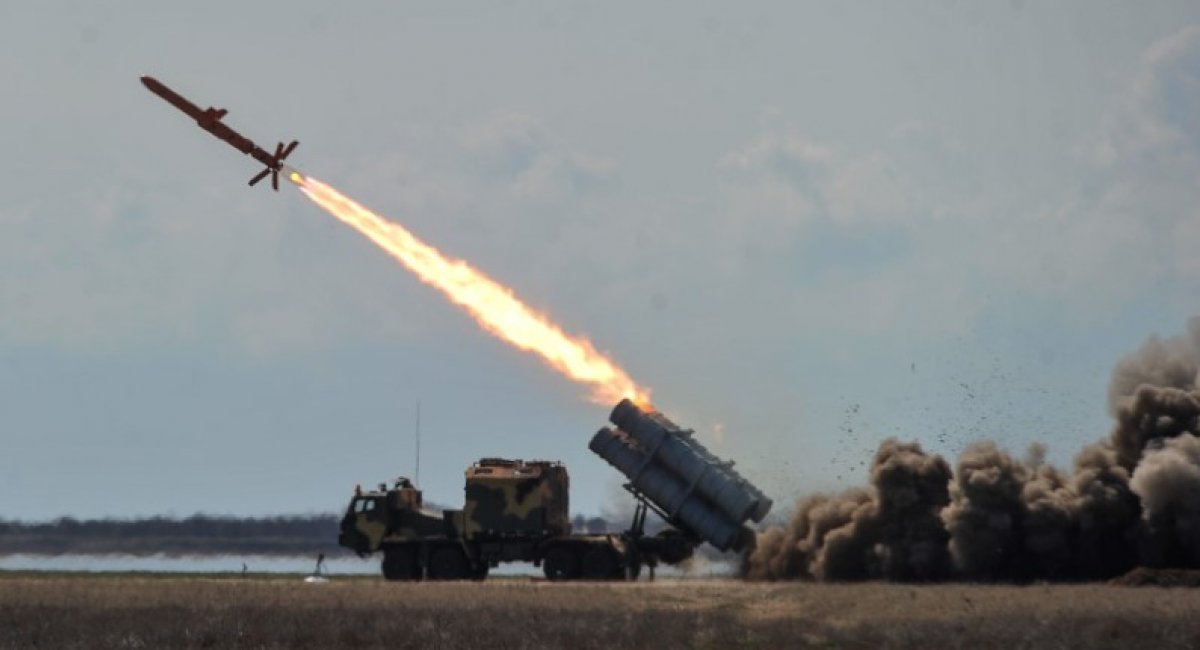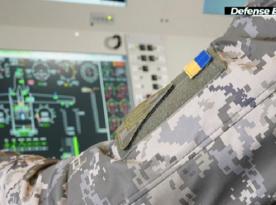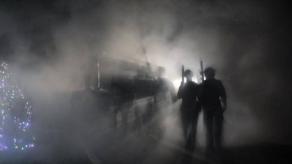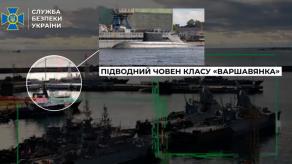Russia's aggressive actions have demanded a prompt, adequate response from Ukrainian defense industries. New armament products have been developed which can help Ukrainian forces nullify the adversary’s numerical superiority in land and sea operations. Ukraine opted to focus on indigenous development and production of precision-attack missile systems. Some have already successfully passed through the official trials and qualification process and begun to be fielded on the battlefield. Following are descriptios of two of the most advanced and capable weapoans products developed in Ukraine recently – the Multiple Launch Rocket System (MLRS) “Vilkha” and the mobile anti-ship cruise missile (ASCM) system ‘Neptune’.
MLRS System ‘Vilkha’
Developed by the State Enterprise KB Luch R&D Company, Kyiv, the Vilkha has successfully completed the full cycle of the official trials and qualification process, has been officially accepted into service and begun to be fielded with artillery battalions of the Ukrainian Army.
Read more: Spectator-M1: mission successful
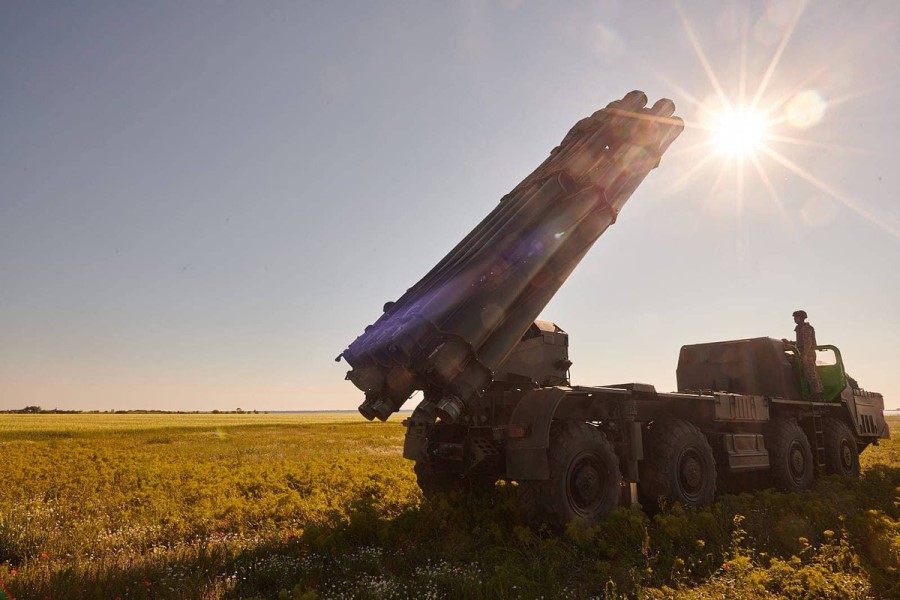
The Vilkha is the most capable MLRS weapon system currently in military use in Ukraine. It is designed to combine excellent multifunctionality, maneuverability, probability of success, operational reliability, accuracy and lethality in a single system. The Vilkha offers a sufficiently long range and high lethality against human targets as well as field fortifications and armored targets. It provides lethality proportional to theater-ballistic missile weapons.
The Vilkha has been developed out of the legacy Russo-Soviet 300-mm MLRS technology 9K58 ‘Smerch ‘. In terms of terminal effectiveness, 300-mm MLRS weapons are sometimes argued to be able to rival even with tactical nuclear weapons. One Vilkha vehicle can launch a salvo of 12 rockets/missiles to targets distanced at 70 km. A single salvo can demolish almost everything on an area of 67 hectares, which is roughly equal to 100 football fields. At attack of just a single Vilkha would be sufficient to destroy all enemy airplanes and helicopters on an airfield, and six would disrupt an offensive of a brigade-size mechanized or tank force.
The Vilkha rocket/missile is designed such as to be suitable for launch from the 9K58 Smerch launcher tube.
The Vilkha MLRS Project is a collaboration of about a dozen and a half domestic companies who have contributed herein their proprietary technology solutions, with no dependence on foreign suppliers for structural components and subsystems.
The Vilkha missile weighs ~800 kg, of which ~500 kg consists of a jet engine, ~250 kg of warhead, and ~70 kg of guidance and control kit. The engine gives the missile a speed of 1,200-1,300 m/s (which exceeds Mach 3) during the boosted phase of the flight, and ~Mach 3.4 is achieved at the terminal phase of flight. The munition has a highly maneuverable flight capability that reduces the probability of intercept by anti-missile system, making it virtually immune to enemy air defense attacks.
The Vilkha rocket would deliver its warhead to a range of 70 km with a CEP of 10-15 m, and can achieve accuracies that approach zero meter CEP, as evidenced on many occasions by the results of earlier test launches.
As well as excellent accuracy, the Vilkha is advantageous over its Smerch original in that, in the terminal phase of flight, multiple Vilkha rockets launched in a single salvo can be dispersed and guided independently of each other and toward different targets. Each rocket would defeat its designated target of known location preloaded into its “brain”. Twelve rockets launched simultaneously at a certain common angle would disperse within a ~1.5 km radius. The rockets can be fired individually or in ripples of two to 12.
The Vilkha is equipped with an automatic launch capability that allows a significantly shorter time for inputting target-specific ballistic and targeting data into each missile and for pre-launch preparations. The aiming of missile launch tubes in azimuth and elevation has been made much easier as well.
The Vilkha is designed with a shoot-and-scoot capability. The GPS and targeting data downloading operations would be performed while at the firing position, but reloading would typically take place a few kilometers away from the firing position to avoid counter-battery fire. A full load of 12 missiles takes 48 seconds to deliver, and the system can be packed up and ready to move in 3-4 minutes. All 12 launcher tubes would take 20 min to reload using a transporter/transloader craned vehicle with 12 stowed missiles/rockets.
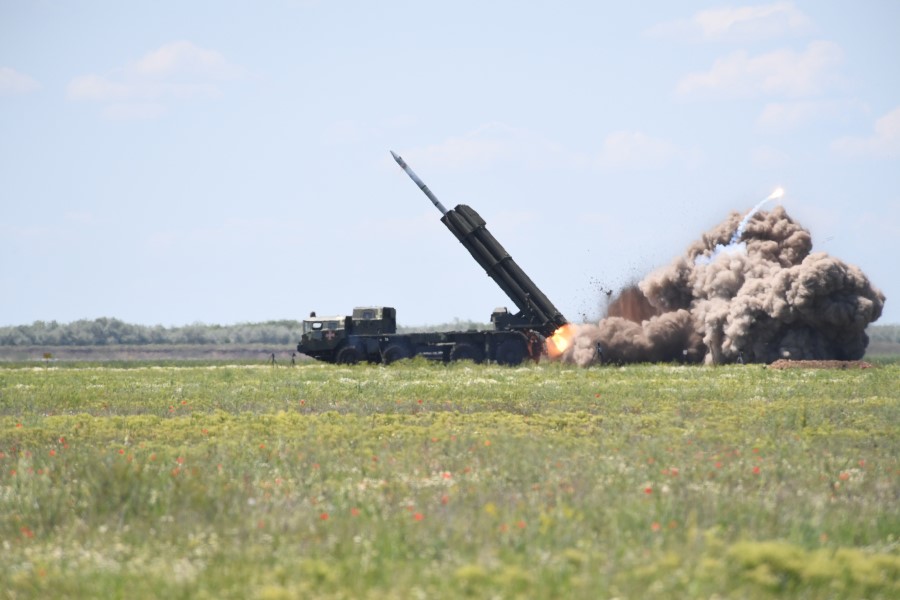
An extended-range rocket designated Vilkha-M has been developed to enable ranges up to 120 km without compromising accuracy. With this longer-range capability at hand, targets can be engaged from defilade under ECM conditions.
On a parallel track, projects are being pursued to replace the currently used wheeled Vilkha vehicle of non-Ukrainian origin with a domestically manufactured platform, and to set up domestic production of launcher platforms for 300 mm MLRS rockets.
Thanks to the knowledge, experience and passion of the Luch engineer team, Ukraine’s armed services now have in possession a new weapon capable of the multiple functions inaccessible to legacy MLRS weapons originating in the Soviet Union.
Vilkha’s capabilities, which have been verified and validated during the official trials and qualification process, are going to become a key component to Ukraine’s future enhanced “missile shield and sword”.
Mobile Anti-Ship Cruise Missile (ASCM) System ‘Neptune’
The RK-360MTs ‘Neptune’ is a shore-based ASCM system optimized to fire the cruise missile R-360. The Neptune missile is intended to be used against surface combatants like cruisers, torpedo boat destroyers, frigates, and corvettes, as well as amphibious landing ships and transport vessels sailing in strike groups (convoys) or individually, and it would be effective also against radar-detectable targets on the shore.
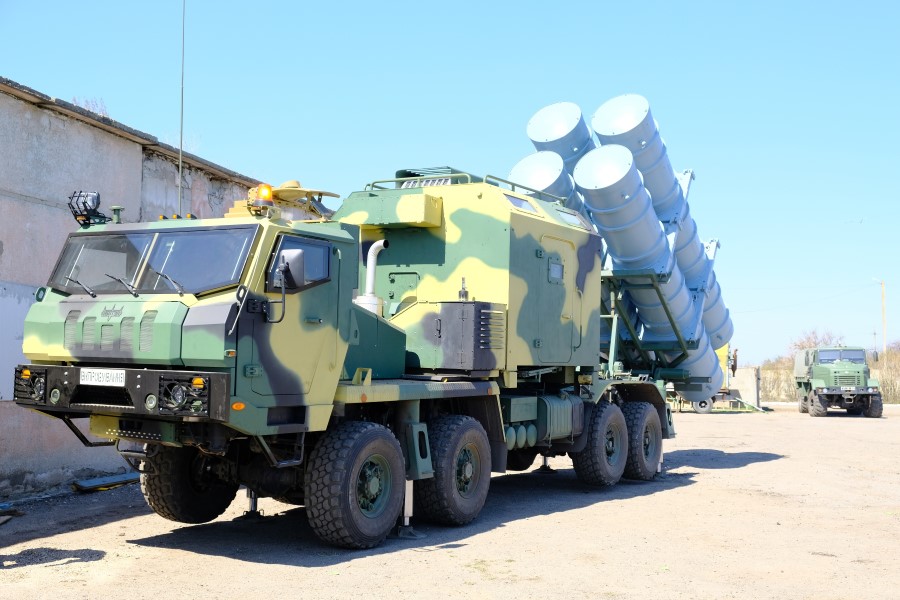
The RK-360MTs ‘Neptune’ is being designed as a day-night all-weather weapon system capable of operating in severe ECM environments and under heavy enemy counterfire. It would be able to engage targets at ranges from 7 to 280 km.
The Neptune would be able to achieve its full capability if positioned no farther than 25 km from the coastline.
Full salvo – 24 missiles.
The time lag between missiles launched in a salvo – 3...5 s.
Time from the end of mission to ready-to-fire time for the next mission – ≤15 min.
ASCM Neptune vehicle range – ≤1,000 km.
The Neptune ASCM Battery includes:
1. Command-and-control post vehicle equipped (1) for automatic control of the System’s operation, (2) to ensure sustainable communication (over HF, UHF and satellite) with higher echelons and other Neptune vehicles. The five-member crew can emplace the command-and-control post and have it ready for mission in no longer than 10 minutes.
2. R-360 missile in the TPK-360 storage/transport/launch canister. Armed with a 150-kg warhead, the 870-kg, 380-mm diameter missile would skim over the sea at a height of 3...10 m. It will have a maximum range of 280 km.
3. Unified launcher system USPU-36 is equipped for temporary storage, transport, pre-launch preparation and launch of R-360 missiles.
4. Transporter/transloader vehicle T3M-360 carries TPK-360 canisters with R-360 rockets.
5. Ground support equipment kit KMO.
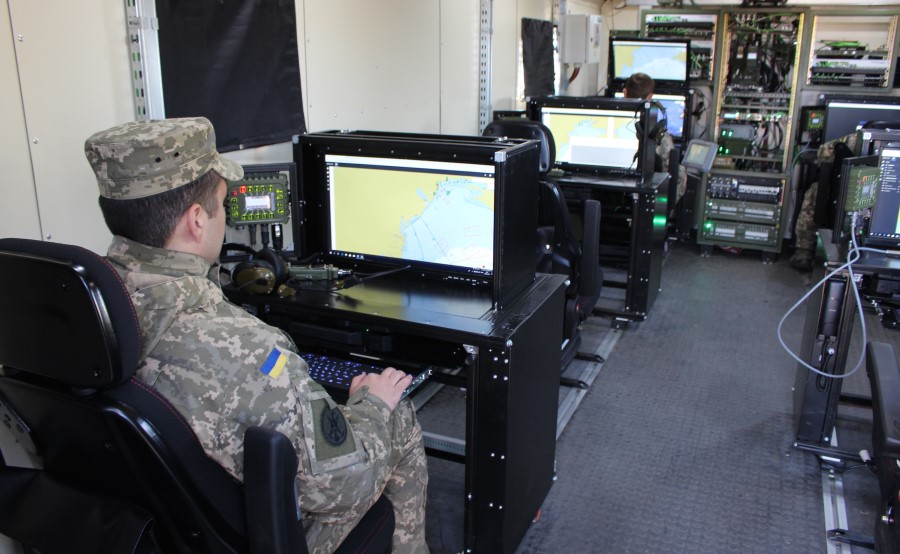
The composition of the Neptune Battery can be configured to meet specific Customer needs. A Neptune battalion would typically consist of: (1) mobile command and control post, (2) three launcher batteries consisting of two launchers USPU-360 each, (3) operational support battery consisting of six transporter/transloader vehicles each carrying one storage/transport/launch canister TPK-360, (4) logistical units. Each Neptune battalion will have a standard missile establishment of 72.
The State Enterprise KB Luch R&D Company, Kyiv, is the primary contractor for the Neptune ASCM System. The Neptune Project is a collaboration involving domestic entities only, including but not limited to: Orizon-Navigation, Impulse, Visar, Arsenal TsKB, Radionix, Telecart-Prybor, UkrInMash, Ukrainian Armored Vehicles, Motor-Sich, and KrAZ.
The Neptune ASCM System technology offers a number of important competitive advantages in the following ways:
1. In terms of capabilities versus cost trade-offs, the R-360 rocket, while being cheaper to buy, exhibits performance capabilities roughly on a par with best international brands from the U.S., Sweden, PRC, and Russia. Being fully indigenous it eliminates reliance on foreign sources of components and subsystems.
2. The Neptune can be integrated with any of the existing foreign-produced ISTAR assets by networking the Neptune command-and-control post vehicle with Customer’s systems. It can also operate autonomously by using targeting data obtained externally from reconnaissance missions and aerial surveillance from manned/unmanned aircraft.
3. The System can be located for production in the Customer’s home country. In particular, it can be mounted on any wheeled chassis brand with off-road performance as required by Customer need.
4. The ASCM Neptune is unified for launch from land, sea and air platforms. In Ukraine, it was test launched from missile boats and is being adapted for launch from the Su-24M-type strike aircraft (Su-27 objective). The configuration optimized for air launches will be designed without a canister, enabling the missile to be delivered from standard aircraft rocket launchers like APU-78 or AKU-58.
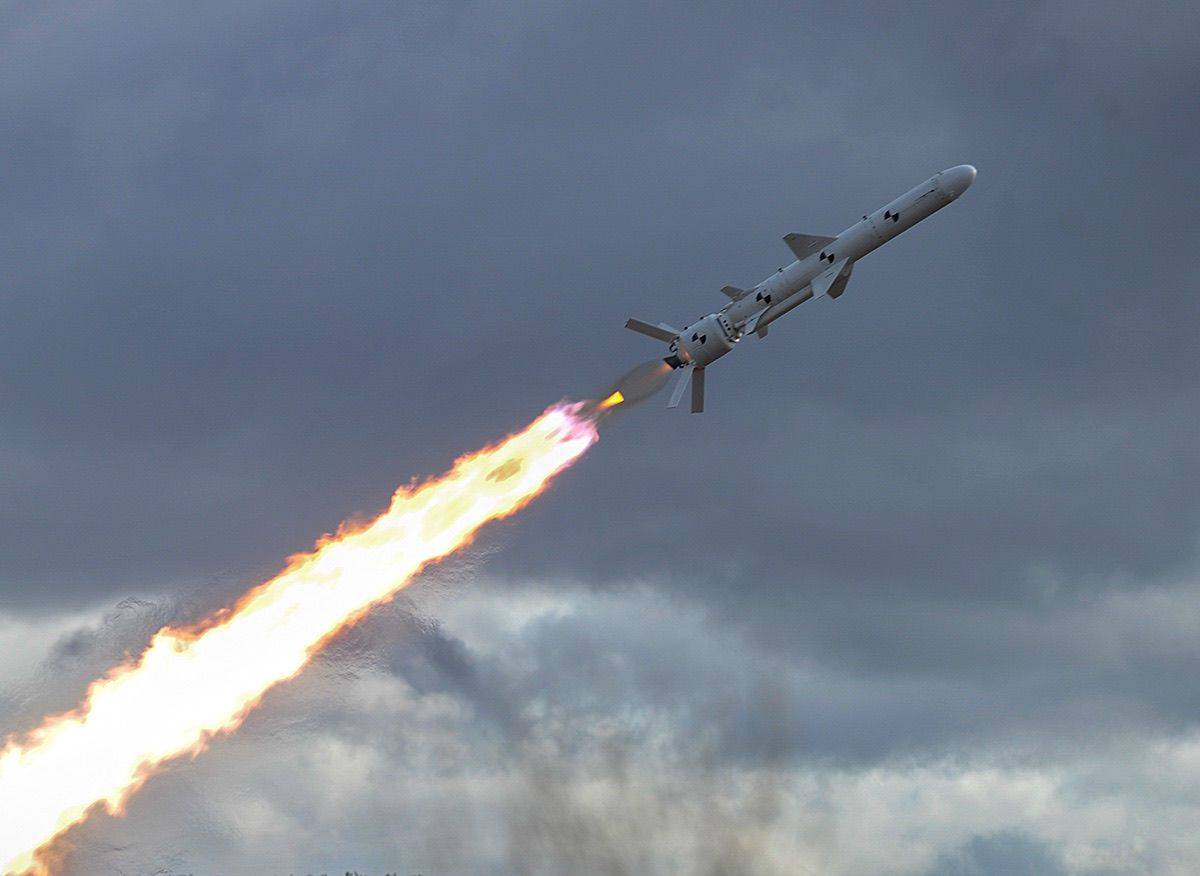
Overall, the procurement of new missile products developed and produced by SE KB Luch would provide Ukrainian forces with a capability to engage, with a 100 percent probability of success, targets of a technologically developed adversary, in severe air defense and ECM environments.
Read more: Combat ‘TURTLE’ and its related siblings



